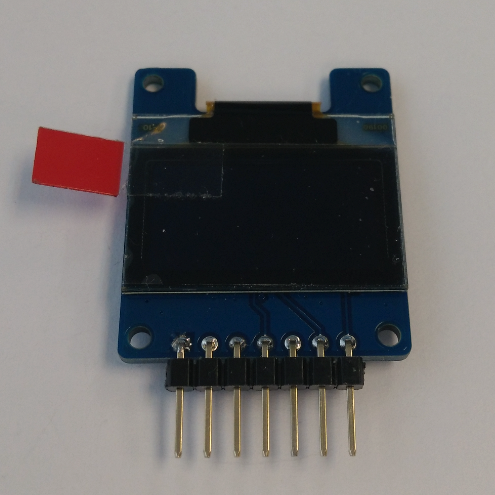Difference between revisions of "Matrix - 0.96' 128x64 OLED"
From FriendlyELEC WiKi
(→Introduction) |
(→使用方法) |
||
| Line 11: | Line 11: | ||
* 2.54mm spacing pin header | * 2.54mm spacing pin header | ||
| − | == | + | ==How To Use It== |
| − | === | + | ===Connection=== |
| − | * | + | *Connect to Tiny4412 SDK (1506) |
| − | :: | + | ::GND: Gound |
| − | ::VCC: | + | ::VCC: 5V |
| − | :: | + | ::CLK: SPI CLK |
| − | :: | + | ::MOSI: SPI MOSI |
| − | :: | + | ::RES: GPIO PIN1 |
| − | :: | + | ::DC: GPIO PIN2 |
| − | :: | + | ::CS: SPI CS |
===Linux下的C示例=== | ===Linux下的C示例=== | ||
Revision as of 07:59, 3 August 2015
1 Introduction
This is a tiny single color OLED. It is 0.96" and its resolution is 128 x 64. It can display text and graphics.It is high contrast and low power consumption. This module is powered by 5V which is converted to 3.3V to OLED. It communicates via SPI or I2C. Its signal level is 3.3V. By default it communicates via SPI. If you want to set its communication interface to I2C you can change module's resistors.
2 Features
- Tiny
- High contrast, low power consumption
- SPI/I2C
- 2.54mm spacing pin header
3 How To Use It
3.1 Connection
- Connect to Tiny4412 SDK (1506)
- GND: Gound
- VCC: 5V
- CLK: SPI CLK
- MOSI: SPI MOSI
- RES: GPIO PIN1
- DC: GPIO PIN2
- CS: SPI CS
3.2 Linux下的C示例
#include <stdio.h> #include "libfahw.h" int display(int x, int y, char* str) { int devFD; if ((devFD = OLEDInit(TINY4412_GPIO_PIN1, TINY4412_GPIO_PIN2)) == -1) { printf("Fail to init OLED\n"); return -1; } // Char bitmap: 8x16 OLEDDisp8x16Str(devFD, x, y, str); OLEDDeInit(devFD); return 0; } int main(int argc, char *argv[]) { display(0, 0, "1234567890"); display(0, 16, "ABCDEFGHIJK"); return 0; }
3.3 编译并运行示例
git clone http://github.com/friendlyarm/fa-hardware.git cd fa-hardware cd demo cd matrix-0.96inch_128x64_oled make
将编译生成的OLED通过ftp上传到开发板上运行即可测试。
